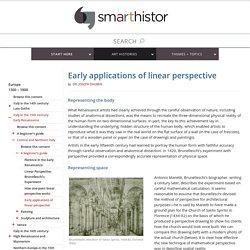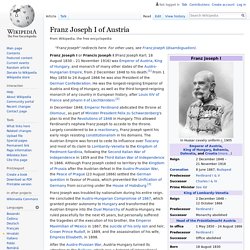

The Enduring 200-Year-Old Mystery Of Kaspar Hauser. Johann Wolfgang von Goethe. Amazon. Goethe on the Psychology of Color and Emotion. Color is an essential part of how we experience the world, both biologically and culturally. One of the earliest formal explorations of color theory came from an unlikely source — the German poet, artist, and politician Johann Wolfgang von Goethe (August 28, 1749–March 22, 1832), who in 1810 published Theory of Colors (public library | public domain), his treatise on the nature, function, and psychology of colors. Though the work was dismissed by a large portion of the scientific community, it remained of intense interest to a cohort of prominent philosophers and physicists, including Arthur Schopenhauer, Kurt Gödel, and Ludwig Wittgenstein.
One of Goethe’s most radical points was a refutation of Newton’s ideas about the color spectrum, suggesting instead that darkness is an active ingredient rather than the mere passive absence of light. Theory of Colours. Theory of Colours (German: Zur Farbenlehre) is a book by Johann Wolfgang von Goethe about the poet's views on the nature of colours and how these are perceived by humans.

It was published in German in 1810 and in English in 1840.[2] The book contains detailed descriptions of phenomena such as coloured shadows, refraction, and chromatic aberration. The work originated in Goethe's occupation with painting and mainly exerted an influence on the arts (Philipp Otto Runge, J. M. W. Turner, the Pre-Raphaelites, Wassily Kandinsky). American psychiatrist. Édouard Séguin. Édouard Séguin (1812–1880) Édouard Séguin (January 20, 1812 – October 28, 1880) was a physician and educationist born in Clamecy, Nièvre, France.

He is remembered for his work with children having cognitive impairments in France and the United States. Early applications of linear perspective – Smarthistory. Representing the body What Renaissance artists had clearly achieved through the careful observation of nature, including studies of anatomical dissections, was the means to recreate the three-dimensional physical reality of the human form on two-dimensional surfaces.

In part, the key to this achievement lay in understanding the underlying, hidden structure of the human body, which enabled artists to reproduce what it was they saw in the real world on the flat surface of a wall (in the case of frescoes), or that of a wooden panel or paper (in the case of drawings and paintings). Artists in the early fifteenth century had learned to portray the human form with faithful accuracy through careful observation and anatomical dissection. In 1420, Brunelleschi’s experiment with perspective provided a correspondingly accurate representation of physical space. Linear perspective interactive (article) Perspective. Perspective may refer to: Vision and mathematics[edit] Entertainment[edit] Other[edit]

Linear perspective. A. Hueck Die Bewegung der Krystallinse 1841. Opticks. The first, 1704, edition of Opticks: or, a treatise of the reflexions, refractions, inflexions and colours of light.

Opticks: or, A Treatise of the Reflexions, Refractions, Inflexions and Colours of Light is a book by English natural philosopher Isaac Newton that was published in English in 1704.[1] (A scholarly Latin translation appeared in 1706.) The book analyzes the fundamental nature of light by means of the refraction of light with prisms and lenses, the diffraction of light by closely spaced sheets of glass, and the behaviour of color mixtures with spectral lights or pigment powders. It is considered one of the great works of science in history. Opticks was Newton's second major book on physical science. Newton's name did not appear on the title page of the first edition of Opticks. Overview[edit] Newton's visionary contribution to prismatic dispersion was the first to outlined multiple-prism arrays.
Emperor of Austria-Hungary. Franz Joseph I of Austria. Franz Joseph I or Francis Joseph I (Franz Joseph Karl; 18 August 1830 – 21 November 1916) was Emperor of Austria, King of Hungary, and monarch of many other states of the Austro-Hungarian Empire, from 2 December 1848 to his death.[1] From 1 May 1850 to 24 August 1866 he was also President of the German Confederation.

He was the longest-reigning Emperor of Austria and King of Hungary, as well as the third-longest-reigning monarch of any country in European history, after Louis XIV of France and Johann II of Liechtenstein. Franz Joseph was troubled by nationalism during his entire reign. Robert Smith. From Wikipedia, the free encyclopedia Jump to navigationJump to search Robert or Bob Smith, or similar, may refer to: Arts and entertainment[edit]

Homonymous hemianopsia. Hemianopsia, or hemianopia, is a visual field loss on the left or right side of the vertical midline.

It can affect one eye but usually affects both eyes. Homonymous hemianopsia (or homonymous hemianopia) is hemianopic visual field loss on the same side of both eyes. Eva Lauk and schopenhauer. Jakob Friedrich Fries. Jakob Friedrich Fries (German: [fʁiːs]; 23 August 1773 – 10 August 1843) was a German post-Kantian[1] philosopher.

Biography[edit] Fries studied theology at the academy of the Moravian Brethren at Niesky and philosophy at the Universities of Leipzig and Jena. Nicholas Saunderson. Nicholas Saunderson LLD FRS (20 January [1]1682 – 19 April 1739) was a blind[2] English scientist and mathematician.

According to one historian of statistics, he may have been the earliest discoverer of Bayes theorem.[3] He worked as Lucasian Professor, a post also held by Isaac Newton, Charles Babbage and Stephen Hawking. Biography[edit] Saunderson was born at Thurlstone, Yorkshire, in January 1682.[4] When about a year old he lost his sight through smallpox; but this did not prevent him from acquiring a knowledge of Latin and Greek, and studying mathematics. As a child, he is also thought to have learnt to read by tracing the engravings on tombstones around St John the Baptist Church in Penistone with his fingers. His early education was at Penistone Grammar School, and he was introduced to Cambridge via meetings with the local gentry at Underbank Hall, near Penistone. In 1707, he arrived in Cambridge, staying with his friend Joshua Dunn, a fellow-commoner at Christ's College. Friedrich Wilhelm Joseph Schelling. German philosopher Friedrich Wilhelm Joseph Schelling (German: [ˈfʁiːdʁɪç ˈvɪlhɛlm ˈjoːzɛf ˈʃɛlɪŋ];[13][14][15][16] 27 January 1775 – 20 August 1854), later (after 1812) von Schelling, was a German philosopher.
Hesiod. Ancient Greek poet Hesiod (;[1] Greek: Ἡσίοδος Hēsíodos, 'he who emits the voice') was an ancient Greek poet generally thought to have been active between 750 and 650 BC, around the same time as Homer.[2][3] He is generally regarded as the first written poet in the Western tradition to regard himself as an individual persona with an active role to play in his subject.[4] Ancient authors credited Hesiod and Homer with establishing Greek religious customs.[5] Modern scholars refer to him as a major source on Greek mythology, farming techniques, early economic thought,[6] archaic Greek astronomy and ancient time-keeping. Life[edit] Hesiod and the Muse (1891), by Gustave Moreau. The poet is presented with a lyre, in contradiction to the account given by Hesiod himself in which the gift was a laurel staff. Niccolò Machiavelli. Italian politician, writer and author Niccolò di Bernardo dei Machiavelli (, ; Italian: [nikkoˈlɔ mmakjaˈvɛlli]; 3 May 1469 – 21 June 1527) was an Italian diplomat, politician, historian, philosopher, writer, playwright and poet of the Renaissance period.[2][3][4] He has often been called the father of modern political philosophy[5][6][7] and political science.
For many years he served as a senior official in the Florentine Republic with responsibilities in diplomatic and military affairs. On Vision and Colors. On Vision and Colours schopenhauer. On Vision and Colours - Cerca con Google. Circa 3.410.000 risultati. On Vision and Colors. Karl Rosenkranz. Johann Karl Friedrich Rosenkranz. Max Müller. Joseph Priestley. Joseph Priestley. Casualty three forms stimulus, motives, and causes schopenhauer - Google-Suche. Causa sive ratio - Vincent Carraud - Epimethée. Causa sive ratio. Maine de Biran in his "Nouvelles considerations des rapports du physique au moral"
The Relationship Between the Physical and the Moral in Man - Cerca amb Google. The Relationship Between the Physical and the Moral in Man - Cerca con Google. Maine de Biran. François-Pierre-Gontier de Biran (French: [mɛn də biʁɑ̃]; 29 November 1766 – 20 July 1824), usually known as Maine de Biran, was a French philosopher. Laplace transform. In mathematics, the Laplace transform is an integral transform named after its inventor Pierre-Simon Laplace (/ləˈplɑːs/). Pierre-Simon Laplace. Law of causality the law of inertia and permanence of substance - Recherche Google. Law of causality the law of innirsia and permenemce of substance - Recherche Google. Causality. Understanding Georg Simmel: Sociological Focus: Vol 16, No 3. Nexus. Definition of nexus in English by Oxford Dictionaries.
Noun. Nexus. Nexus (noun) definition and synonyms. Nexus - Dictionary Definition. Definition of Nexus by Merriam-Webster. Nexus Law and Legal Definition. Principle of Sufficient Reason. Critique of Judgment. Georg Wilhelm Friedrich Hegel. Baron Verulam. Hegelianism. Hegelianism. German poetry (Johann Wolfgang von Goethe): Der Zauberlehrling - The Sorcerer's Apprentice. Der Zauberlehrling. Der Zauberlehrling. The Sorcerer's Apprentice. Definition of incognito in English by Oxford Dictionaries. Incognito. Ontological Argument. Ontological Arguments. Anselm: Ontological Argument for the God’s Existence. Ontological argument. Teleological Argument (Overview) Physicotheology. Cosmological argument. Ad infinitum. Conflicting Conditions.
Contradictio in adjecto. Contradictio in terminis. Contradictio in adjecto. Postmodern psychology: A contradictio in adjecto?: The Humanistic Psychologist: Vol 18, No 1. Definition of Contradictio In Adjecto by Merriam-Webster. Contradictio in adjecto - Mises Wiki, the global repository of classical-liberal thought. Contradictio in adjecto. Prima causa. Five Ways. Friedrich Nietzsche and free will. Unmoved mover. Causa prima. Causa prima. Causa sui. Inquiry Into the Relation of Cause and Effect (Classic Reprint) : Thomas Brown : 9781331062288. Amazon. Amazon. Amazon. Inquiry into the Relation of Cause and Effect by Thomas Brown. Inquiry into the relation of cause and effect : Brown, Thomas, 1778-1820 : Free Download, Borrow, and Streaming. Inquiry into the relation of cause and effect - Google-Suche. Thomas Brown, Scottish psychologist (1778-1820) Thomas Brown on the philosophy and psychology of perception. - PubMed - NCBI.
Thomas Brown (Philosopher) - Encyclopedia. Thomas Brown (philosopher) Scottish Philosopher. British physician and philosopher. Thomas Brown.